People say Taylor Swift’s concerts shake the ground. Not metaphorically-literally. Social media clips show fans jumping in unison, phones rattling on tables, and stadium lights swaying. Some even claim the Eras Tour triggered minor earthquakes. So, has a Taylor Swift concert ever caused an earthquake? The short answer: no. But the reason why people think it did tells us something much more interesting about crowd energy, seismic sensors, and the power of collective excitement.
What Actually Happened in Arlington, Texas
The rumor exploded in May 2023, after Taylor Swift performed at AT&T Stadium in Arlington, Texas. The U.S. Geological Survey (USGS) recorded a tiny seismic event-magnitude 1.3-just minutes after the show ended. The tremor lasted less than a minute. It was so small, most people wouldn’t feel it. But because it happened right after the concert, headlines ran wild: "Taylor Swift Causes Earthquake." Here’s the truth: that tremor wasn’t natural. It was man-made. And it wasn’t caused by singing or dancing. It was caused by 60,000 people jumping at the same time.Seismometers don’t care if something is natural or human-made. They just detect ground movement. A crowd jumping in rhythm creates vibrations that travel through the earth. That’s exactly what happened in Arlington. The USGS later confirmed the signal matched the pattern of synchronized human movement-not tectonic activity.
How Much Force Does a Crowd Generate?
A single person jumping generates about 1,000 newtons of force. Multiply that by 60,000 people, and you get 60 million newtons. That’s the equivalent of a small truck hitting a wall at 30 mph. In a stadium built on concrete and steel, that energy doesn’t just disappear. It travels down through the foundation, into the soil, and registers on sensitive instruments.But here’s the catch: that force is still tiny compared to real earthquakes. The 2011 Tohoku earthquake in Japan released energy equal to 600 million tons of TNT. A Taylor Swift concert? Less than one ton of TNT. Even the loudest bass drop from her stage speakers is quieter than a passing subway train. The ground moves, yes-but not enough to crack pavement, shift foundations, or trigger fault lines.
Other Concerts Have Done This Too
Taylor Swift isn’t unique. In 2017, a Coldplay concert in Manchester caused a similar blip on seismic monitors. So did a U2 show in Boston in 2005. Even a single soccer match at the Rose Bowl in 2014 triggered a detectable tremor when fans celebrated a goal. These aren’t anomalies. They’re physics.Stadiums are designed to handle movement. The seating, the beams, the foundations-they all flex slightly under pressure. That’s why you see the whole arena sway when a crowd stomps. But that’s not damage. That’s engineering working as intended. The same principle applies when thousands of people clap in rhythm at a concert. The building responds. The ground responds. Sensors pick it up. That doesn’t mean the earth is breaking. It means the earth is recording.
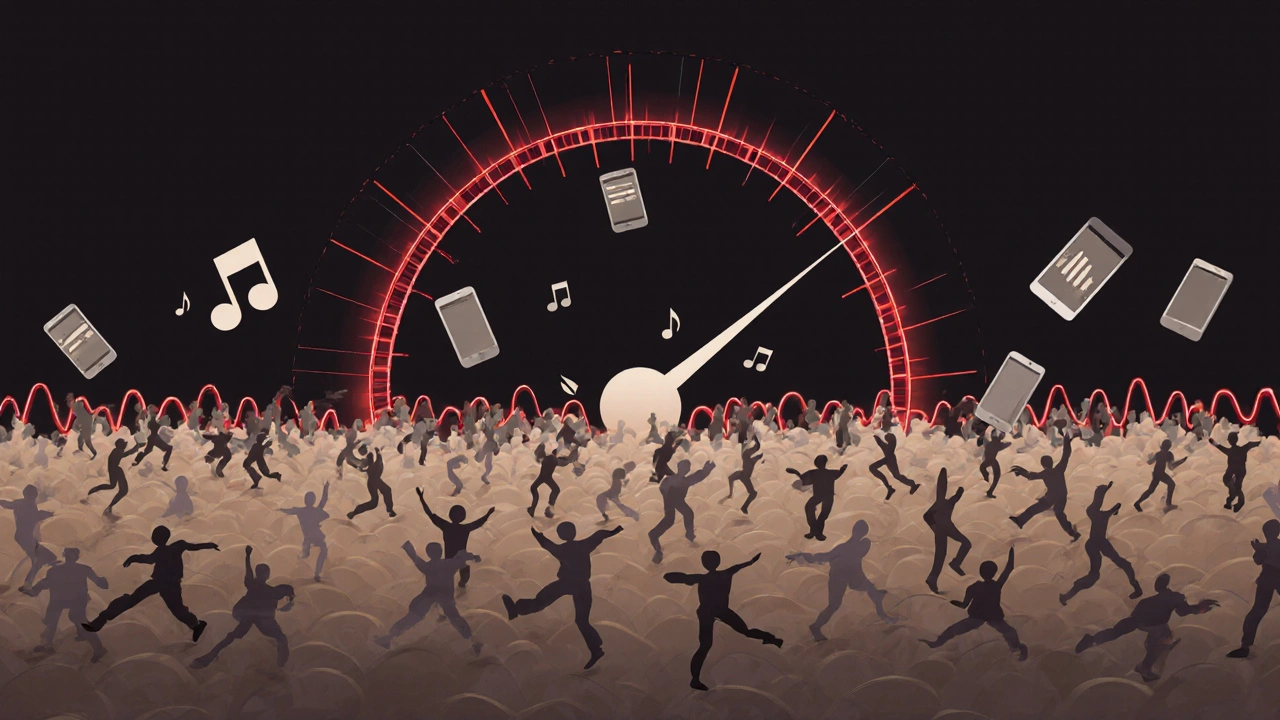
Why Do People Believe It’s an Earthquake?
The confusion comes from language. We call it an earthquake because that’s the only word most people know for ground shaking. But seismologists have a whole taxonomy for these events. They’re called anthropogenic seismic events-human-caused tremors. Others are called crowd-induced vibrations or resonance events.When a news outlet says "earthquake," it grabs attention. When they say "crowd-generated ground motion," it sounds like a boring science paper. So the story sticks. And with Taylor Swift’s fanbase being so massive and emotionally charged, the myth grew faster than a viral TikTok.
There’s also a cultural layer. Taylor Swift’s concerts aren’t just shows-they’re communal rituals. Fans dress up, sing every word, cry, hug strangers, and jump until their legs give out. That collective energy feels supernatural. When the ground shakes, it’s easy to believe the music itself is powerful enough to move the earth.
Could a Concert Ever Cause Real Damage?
No. Not even close. Modern stadiums are built to withstand forces far beyond what a crowd can produce. The structural load limits for AT&T Stadium? Over 10,000 tons of static weight. The dynamic load from jumping fans? Less than 5% of that.Even in older venues, like London’s Wembley Stadium or Sydney’s Accor Arena, engineers account for crowd movement. They use dampers, reinforced concrete, and flexible joints. The worst that could happen? A loose light fixture falls. Or someone loses their shoe. Not a building collapse. Not a fault line opening.
Compare this to real seismic threats. Earthquakes happen because tectonic plates grind against each other, releasing energy stored over centuries. A concert? A few minutes of synchronized jumping. The scale difference is like comparing a candle to a volcano.

What About the Fans? Do They Feel It?
Yes. And that’s the real magic.When 60,000 people jump together, the floor vibrates under your feet. You feel it in your chest. Your phone buzzes. Your drink sloshes. It’s not the earth moving-it’s the stadium moving. And because you’re part of the movement, it feels like the whole world is shaking. That’s why people leave concerts saying, "I felt the ground move." It’s not a lie. It’s an experience.
That feeling is why Taylor Swift’s shows sell out in seconds. It’s why fans camp out for days. It’s why people cry when she sings "All Too Well." The energy isn’t just in the music. It’s in the shared moment. And when that energy translates into physical sensation, it becomes unforgettable.
What Do Experts Say?
Dr. Susan Hough, a seismologist with the USGS, put it plainly: "We’ve seen this dozens of times. Concerts, sports games, even religious gatherings can trigger tiny tremors. It’s not dangerous. It’s not rare. It’s just physics."She adds: "We don’t call it an earthquake. We call it a crowd event. But if you’re a fan of Taylor Swift, you can proudly say you helped move the earth. Just not in the way you think."
That’s the beauty of it. You didn’t break the planet. You didn’t cause a disaster. You created something beautiful-a moment where tens of thousands of people moved as one. And for a few minutes, the ground beneath you moved with you.
Final Thought: The Real Earthquake
The real earthquake isn’t on the seismograph. It’s in the hearts of the people who showed up. It’s in the 16-year-old who sang every lyric with her mom. The 40-year-old dad who cried during "My Tears Ricochet." The group of strangers who hugged after the final encore.Taylor Swift didn’t cause an earthquake. But she did something better: she made the ground feel alive. And sometimes, that’s more powerful than any tremor.
Did Taylor Swift really cause an earthquake during her concert?
No. A tiny seismic signal was detected after her Arlington show, but it was caused by 60,000 fans jumping in unison-not tectonic activity. Seismologists classify this as a human-induced vibration, not an earthquake.
Can crowds really make the ground shake?
Yes. When large groups jump, clap, or stomp together, their combined force creates vibrations that seismometers can detect. This has happened at Coldplay, U2, and even soccer matches. It’s normal physics, not a sign of danger.
Are stadiums built to handle this kind of movement?
Absolutely. Modern stadiums are engineered to handle dynamic loads far greater than crowd movement. They include shock absorbers, flexible joints, and reinforced foundations. The ground shaking you feel is the structure doing its job, not failing.
How does a Taylor Swift concert compare to a real earthquake?
A real earthquake releases energy equal to millions of tons of TNT. A concert releases less than one ton. The tremor from fans is about 1/100,000th the size of a minor natural quake. It’s detectable, but not destructive.
Why do people think it’s an earthquake?
Because "earthquake" is a familiar word for ground shaking. Media outlets use it for clicks, and fans feel the vibration intensely. The term sticks, even though seismologists call it a crowd-induced event. It’s a mix of language, emotion, and science.

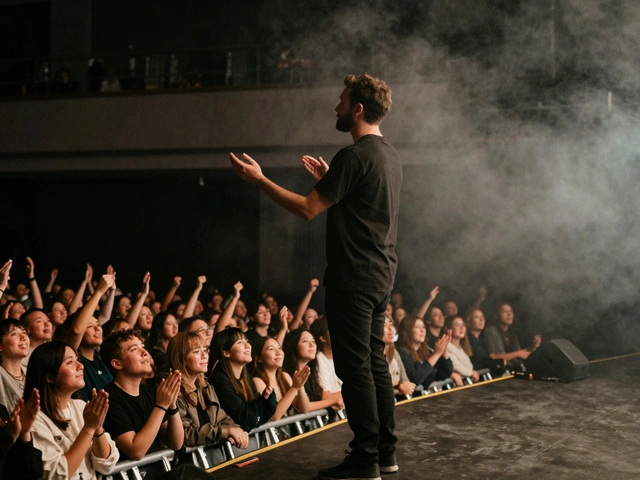
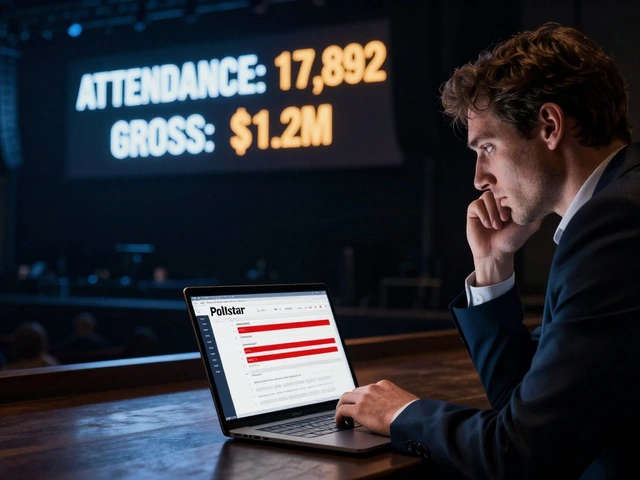

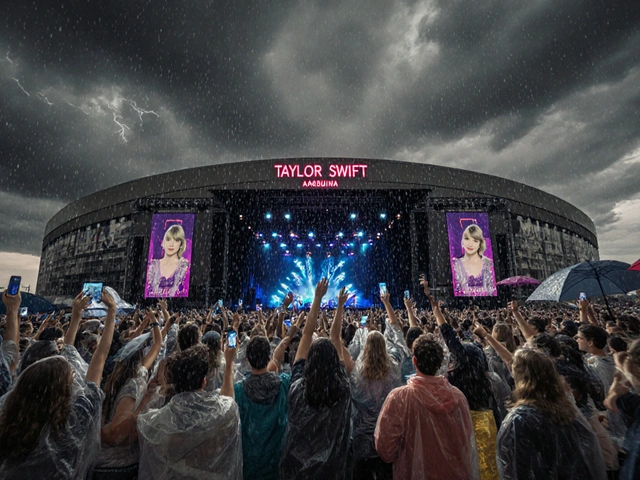
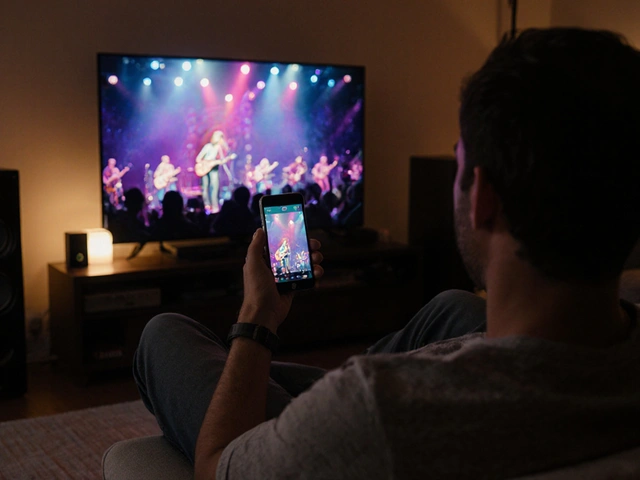
Sheila Alston
People really think a pop concert is shaking the earth? I mean, I get the hype, but this is just basic physics being twisted into some mystical narrative. We’re not talking tectonic plates here-we’re talking 60,000 people bouncing like they’re on a trampoline at a birthday party. The real earthquake is the amount of delusion in the comments section.
And don’t even get me started on how media outlets jump on this. "Taylor Swift Causes Earthquake"-like that’s a headline that deserves front-page news. Next thing you know, someone’s gonna claim Beyoncé’s voice shattered glass and call it a sonic boom.
It’s not magic. It’s not divine intervention. It’s just humans being loud and synchronized. And yet somehow, we’ve turned a simple mechanical phenomenon into a religious experience. We’re losing touch with reality, folks.
I’m not mad. I’m just disappointed. We could be talking about climate change or infrastructure, but no, we’re debating whether a pop star moved the ground. The world is on fire and we’re arguing about whether a concert was an earthquake. Sad.
Also, the fact that people think this is unique to Taylor Swift? Please. Coldplay did it. U2 did it. Soccer fans did it. It’s not about her. It’s about us. We’re the ones who keep pretending magic is real when it’s just math.
Next time you feel the floor shake, thank your neighbor for not being a coward and jumping with you. That’s the real miracle.
And no, I’m not a Swiftie. I’m just someone who still believes in science.
But honestly? I’d pay to see a stadium full of people jump so hard they crack the foundation. That’d be a show.
Wait-no, I wouldn’t. Because that’d mean the building’s unsafe. And that’s not magic. That’s negligence.
So yeah. No earthquake. Just a lot of people having fun. And that’s okay.
Let them jump. Let them feel the vibe. Just don’t call it science. It’s not.
sampa Karjee
How quaint. A pop idol’s fans generate measurable ground vibrations and suddenly we’re all philosophers of collective human energy. How very 21st century-reduce physics to emotional metaphor and call it profundity. The USGS detected a 1.3 magnitude signal? How adorable. That’s less than a dumpster falling down a flight of stairs.
Yet here we are, elevating synchronized jumping into a cosmic event. The real tragedy isn’t the mislabeling-it’s that we’ve surrendered our capacity for nuance to the altar of viral content. Seismologists have a taxonomy. The public has a TikTok trend.
And let’s not pretend this is unique to Swift. Every stadium ever built has been a passive participant in this dance of human resonance. The architecture is designed for it. The sensors are designed to catch it. The media is designed to exploit it.
What’s astonishing isn’t the vibration-it’s that we still need to be told it’s not an earthquake. We’ve become a species that confuses sensation with significance.
Next time someone claims their favorite band moved the earth, ask them if they’ve ever read a textbook. Or better yet, ask them if they’ve ever felt a real quake.
Then let them explain why they’re still surprised.
Patrick Sieber
This is actually one of the coolest things I’ve read all week. The fact that 60,000 people jumping in sync creates a detectable signal? That’s wild. And honestly? Kinda beautiful.
It’s not an earthquake, sure. But it’s still a massive, collective human moment captured by science. That’s rare. Most of the time, we’re just scrolling, ignoring each other. But here? Thousands of strangers moved as one. That’s not just physics-it’s connection.
And the way the article points out that the ground shaking feels like the earth moving? That’s the whole point. It’s not about the numbers. It’s about the feeling. And that’s real.
Also, shoutout to the USGS for not being like, "lol nope" and actually documenting it. That’s how science should work-curious, not condescending.
Now I kinda wanna go to a concert just to feel that. Not for the music. For the physics.
Kieran Danagher
So let me get this straight. A concert caused an earthquake. Right. And I suppose the moon is made of cheese and Taylor’s voice can heal cancer.
Look, I get it. The headline was clickbait. The video looked cool. The fans felt something. But calling it an earthquake is like calling a sneeze a hurricane.
Seismometers detect *anything* that moves the ground. A truck driving by. A dog digging. A kid dropping a textbook. You think the USGS is out there labeling every little bump as an earthquake? Nah. They labeled it what it was: a crowd event.
But the media? They need drama. So they sell you a myth. And now you’re here, defending it like it’s a religious revelation.
It’s not magic. It’s math. And math doesn’t care how much you cry during "All Too Well."
OONAGH Ffrench
The ground moved because people moved
That’s all
Science doesn’t need poetry
But people do
And that’s okay
Let them feel it
Let them believe it
It doesn’t change the numbers
But it changes them
That’s the real tremor
Not on the sensor
Inside the chest
That’s where the earth shifts
And no instrument measures that
So don’t ruin it with facts
Just let it be
It’s beautiful enough as it is
Let them think they moved the world
They did
Just not the way you think
poonam upadhyay
Okay but let’s be real-this is the most overblown, emotionally manipulative, media-engineered nonsense I’ve ever seen. You’re telling me that a bunch of over-privileged, over-saturated, over-dramatic fans jumping up and down is somehow “powerful” or “spiritual”? Please. It’s literally just a group of people who were sold a fantasy and now they’re clinging to it like it’s their last breath.
And don’t even get me started on how the article romanticizes this like it’s some sacred ritual. “The 16-year-old sang with her mom”? Oh wow, what a tearjerker. And yet, in the same breath, you’re comparing it to a real earthquake? That’s not poetic-that’s offensive.
Real earthquakes destroy homes. Real earthquakes kill children. Real earthquakes leave survivors with PTSD. And you’re comparing that to a pop concert where people cry because they sang along to a song written by a billionaire who owns 17 pairs of glittery boots?
This isn’t “collective energy.” This is consumerist delusion wrapped in glitter and sold as enlightenment.
And the fact that people are defending this like it’s a revelation? That’s the real tragedy. We’ve turned emotional manipulation into a cultural virtue.
Next thing you know, someone’s gonna say Taylor’s voice caused a tsunami because someone cried during “Lover.”
Wake up. The ground didn’t move. Your brain did. And it’s been rewired by algorithms, marketing, and manufactured nostalgia.
It’s not magic. It’s monetization.
And you’re paying for it with your dignity.
Shivam Mogha
Jumping causes vibrations. Sensors detect it. Not an earthquake. Done.
mani kandan
There’s something quietly profound about how science and emotion collide here. The seismograph doesn’t care if you’re crying or screaming or hugging a stranger-it just records motion. But the human mind? It needs meaning. So when the floor shakes, we don’t just feel physics-we feel belonging.
That’s why this story sticks. Not because it’s accurate, but because it’s true in a deeper way.
It’s not about Taylor Swift. It’s about what happens when people gather-not to protest, not to buy, not to perform-but to simply be together, in rhythm, in joy.
And yes, the stadium sways. The phones buzz. The ground trembles. But the real tremor? That’s the quiet realization that you’re not alone.
Science explains the how. But the why? That’s yours to hold.
Rahul Borole
It is imperative to clarify that the seismic event recorded following the concert in Arlington, Texas, was categorically not a tectonic phenomenon, but rather an anthropogenic vibration induced by synchronized human locomotion. The magnitude of 1.3 corresponds to a low-energy disturbance, equivalent to approximately 0.8 kilograms of TNT, which is negligible in comparison to natural seismic events. Modern structural engineering standards for large-capacity venues, including AT&T Stadium, are designed to accommodate dynamic loads exceeding 5% of the total static load capacity, ensuring safety under all foreseeable crowd-induced conditions. The detection of such vibrations by highly sensitive seismometers underscores the precision of modern instrumentation-not the power of the event itself. Therefore, while the phenomenon is scientifically valid and culturally significant, it remains entirely non-destructive and non-catastrophic. The emotional resonance experienced by attendees, though profound, should not be conflated with geophysical causality. This distinction is critical for public understanding of both science and spectacle.
Sheetal Srivastava
Oh, so now we’re romanticizing crowd-induced anthropogenic seismicity as some kind of spiritual awakening? How very postmodern. The commodification of affective labor has reached its zenith-where the collective energy of emotionally overstimulated consumers is transmuted into a pseudo-scientific mythos to validate performative fandom. This isn’t physics-it’s affective capitalism dressed in glitter.
The USGS doesn’t call it an earthquake because they’re not idiots. But the media? They’re selling a narrative. And the fans? They’re buying it because they’ve been conditioned to equate emotional intensity with ontological truth. The tremor isn’t in the ground-it’s in the dopamine feedback loop.
Let’s be honest: this isn’t about Taylor Swift. It’s about the collapse of epistemic boundaries in the attention economy. When your identity is built on the ritualized consumption of curated nostalgia, even a 1.3 magnitude vibration becomes a sacred signifier.
And yet, the real horror? The fact that we’ve stopped questioning it. We don’t need science anymore. We need stories. And if those stories make the ground shake? Even better.
Wake up. The only earthquake here is the one in your algorithm.